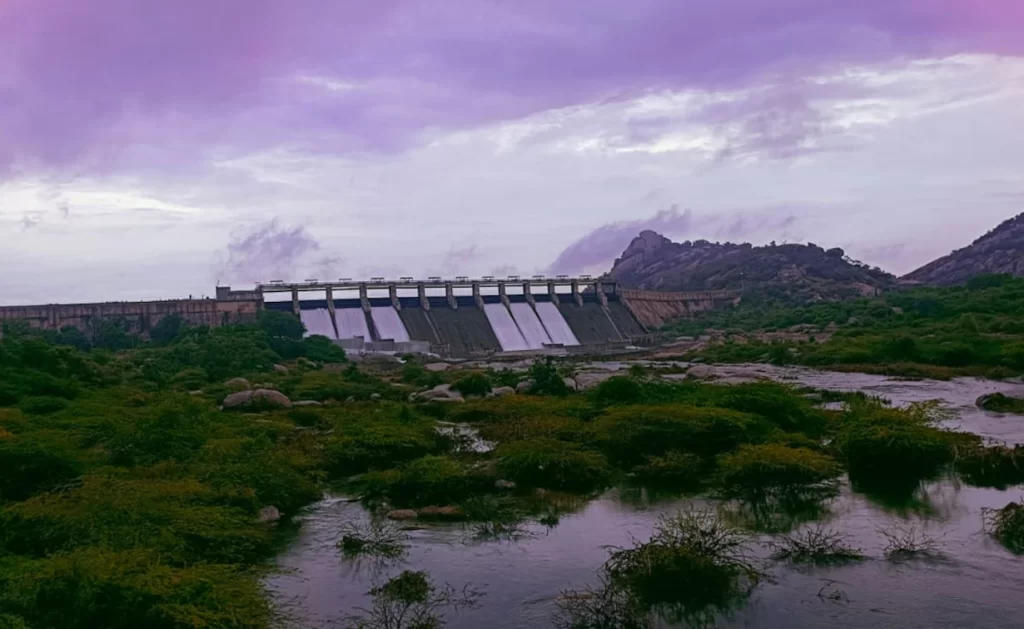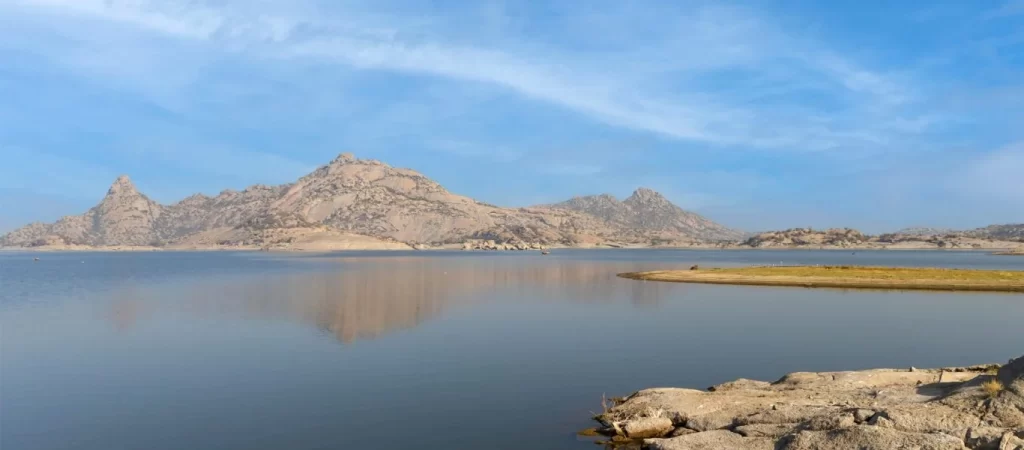Jawai Bandh: A Marvel of Engineering and a Lifeline of the Region

Overview of Jawai Bandh
Introduction: The Heart of Western Rajasthan
Jawai Bandh, a monumental reservoir nestled in the arid yet mesmerizing landscapes of Western Rajasthan, stands as a marvel of engineering and a sanctuary of life. Located on the Jawai River, a tributary of the Luni River, it is among the largest and most significant water reservoirs in the region. Beyond its utilitarian purpose of supplying water, this dam represents the harmonious integration of human ingenuity with the natural environment. Surrounded by rugged granite hills, teeming wetlands, and diverse wildlife, Jawai Bandh is a cornerstone of both ecological balance and local heritage.
The Vision and History Behind Jawai Bandh
The inception of Jawai Bandh was rooted in a bold vision to transform the harsh realities of Rajasthan’s water-scarce landscape. Construction began in 1946, spearheaded under the aegis of Maharaja Umaid Singh of Jodhpur. At the time, the project was a response to a dire need: ensuring a reliable water source to support agriculture, mitigate floods, and provide drinking water to nearby districts.
The construction spanned over a decade, culminating in 1957 with the dam’s grand inauguration. Thousands of laborers toiled in extreme conditions to build this colossal structure. Engineers employed cutting-edge techniques for the era, balancing the monumental task of managing water flow with creating a sustainable solution for the future. Today, Jawai Bandh is more than a reservoir—it is a symbol of perseverance and innovation, sustaining life across Pali, Jodhpur, and Barmer districts.
Architectural Grandeur: A Feat of Engineering
Jawai Bandh is a true testament to the capabilities of mid-20th-century engineering. Stretching approximately 3.5 kilometers in length and standing 61 meters tall, it is an imposing structure designed to endure the challenges of time and Rajasthan’s arid climate. The dam is constructed using a combination of masonry and earth-fill embankments, chosen for their resilience and cost-effectiveness.
The reservoir boasts an impressive storage capacity of 7,887.5 million cubic feet (M.CFT), making it one of Rajasthan’s largest. Its sophisticated spillway system, which manages excess water during monsoons, highlights the foresight of its designers. The vast expanse of water retained by the dam serves not only as a source for agriculture and drinking water but also as a vital lifeline for the region’s flora and fauna.
Ecological Significance: A Biodiversity Hotspot
Jawai Bandh plays a pivotal role in supporting the delicate ecological balance of the region. Its expansive reservoir and surrounding wetlands act as a haven for both resident and migratory bird species. Flamingos, pelicans, cranes, kingfishers, and storks are regular visitors, creating a birdwatcher’s paradise. These wetlands serve as critical stopovers for migratory birds during their long journeys, further enriching the area’s biodiversity.
The reservoir’s edges are also home to crocodiles, often seen basking in the sun, embodying the untamed spirit of the wild. Beyond the water’s edge, the granite hills surrounding Jawai Bandh form a natural habitat for the region’s iconic leopards. These rocky terrains, dotted with caves and crevices, provide ideal dens and hunting grounds for these majestic predators. This unique ecological synergy makes Jawai Bandh a hotspot for nature enthusiasts and conservationists alike.
The Leopards of Jawai: Guardians of the Hills
One of Jawai Bandh’s most captivating features is its thriving leopard population. These big cats have adapted remarkably to the rocky landscapes and coexist peacefully with the local Rabari community. Unlike leopards in many other regions, Jawai’s leopards exhibit a unique behavior—they live in proximity to human settlements without significant conflict.
The constant availability of water from the dam, coupled with an abundance of prey such as livestock and smaller wildlife, has allowed the leopards to thrive. Visitors to Jawai Bandh often marvel at the sight of these elusive creatures, whether basking on the rocky outcrops or gracefully stalking their prey. This harmonious coexistence is a rare phenomenon, showcasing an intricate balance of trust and respect between humans and wildlife.
Irrigation and Socioeconomic Impact
Jawai Bandh is not just a reservoir—it is the lifeblood of the region’s agriculture and economy. The dam irrigates over 1,035 square kilometers of farmland, enabling the cultivation of wheat, barley, mustard, and a variety of vegetables, even during the harshest dry seasons. For farmers, the dam represents security and prosperity, ensuring their livelihoods even in challenging climatic conditions.
Beyond agriculture, Jawai Bandh provides drinking water to countless villages and towns, transforming it into an indispensable resource for the region’s population. Its role in fostering economic stability and improving quality of life for thousands of residents cannot be overstated. For the people of Western Rajasthan, the dam is not merely an infrastructure project but a symbol of resilience and sustenance.
Tourism and Recreation: A Gateway to Jawai’s Beauty
In recent years, Jawai Bandh has emerged as a magnet for tourists, offering a blend of natural beauty, wildlife adventures, and cultural immersion. The reservoir, framed by dramatic granite hills, creates a serene setting that attracts nature lovers and photographers alike. The breathtaking sunrises and sunsets over its tranquil waters are moments of pure magic, encapsulating the rugged charm of the region.
For wildlife enthusiasts, the area offers unforgettable experiences such as leopard safaris, birdwatching tours, and crocodile spotting near the dam. These activities allow visitors to witness Jawai’s extraordinary biodiversity up close, creating memories that last a lifetime. Additionally, cultural interactions with the Rabari community add a layer of depth, offering insights into their harmonious relationship with the land and its wildlife.
Conservation and Sustainable Tourism
The balance between human activity and ecological preservation at Jawai Bandh is delicate. Sustainable tourism initiatives are crucial to maintaining this harmony. Conservation efforts, led by local authorities and non-profits, focus on protecting the leopards, crocodiles, and bird species that call this region home. Visitors are encouraged to engage responsibly, ensuring that their presence supports the area’s conservation goals rather than disrupting its natural rhythms.
Conclusion: A Legacy of Balance and Beauty
Jawai Bandh stands as a symbol of resilience, harmony, and innovation. Its towering structure and vast reservoir represent human ingenuity, while its role as a sanctuary for wildlife and a lifeline for communities highlights its profound ecological and socioeconomic importance.
For the leopards that roam its surrounding hills, Jawai Bandh is a haven; for the people who rely on its waters, it is hope and sustenance; and for visitors, it is an invitation to explore a world where nature and humanity coexist in rare balance. Jawai Bandh is not just an engineering marvel—it is the beating heart of Western Rajasthan, a testament to the enduring spirit of this remarkable region.

